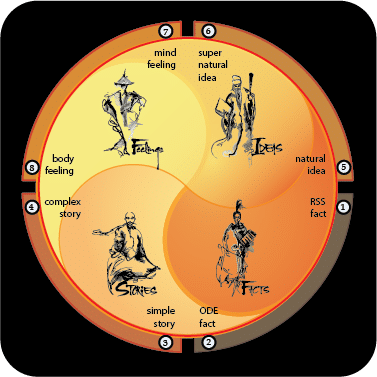What are the Cornerstones of Psychological Practice?
Good Morning, George. Geez. What a tough question! Know I’ve thought about it for a quite a few days now. Why? Because I recently tried to put into words my thirty-plus years of experience on this subject. But even after writing 752 pages, I still found there was much I’d forgotten to address. More discomforting, I found there was far more I’d found downright difficult to put into words. This said, I’m going to try to offer at least a few useful things. Please know, some of this stuff requires a knowledge of my work. For anyone who gets confused by these ideas, I apologize in advance. I’ve chosen to voice my reply this way as I’m trying to be more forthright in speaking about my work.
[1] Know The Two Worthwhile Goals: In a therapy room, there are only two worthwhile goals. If you cannot tell them apart, you will over-effort in every session. In an ongoing way, in every session, you must be asking yourself the following question.
“Am I offering support, or am I trying to change a life?”
These two things are not the same. Used at the right times, they are both worthwhile. But mistaking one for the other will mean you fail to change lives. And even when you do change a life, you will not know how or why. You’ll likely have said the same words many times before. But this time, somehow, it did something different.
[2] Discern Between Temporary vs Permanent Changes: All competent kindhearted therapists can offer support. In doing so, they will make clients feel better. In this way, support is like the air in a therapist’s room. But support is always only temporary relief. Whereas changing a life is different. Changing a life always involves permanent changes.
Sadly, few therapists can begin a session knowing how to change a life. To do this, they must understand the meta-concepts which together, describe how human beings get wounded and heal. To therapists, these meta-concepts function like knowing about squares to mathematicians. Imagine not knowing what a square is? Few therapists know wounds and healing in this way.
In truth, both wounds and healing exhibit knowable, observable, scientifically testable patterns. Watching for, and using, these patterns is the best way to guide sessions. Without this knowledge, therapists must blindly search in the client’s mind. And if lucky, perhaps once a year or so, they help clients to make a single breakthrough.
[3] Know The Two Kinds of Permanent Changes: There are only two experiences in human nature which permanently change a personality; getting startled (what we commonly call, getting wounded),and having an emergence (what we commonly call, healing). Getting startled (being painfully surprised when you expect to be fine) is the root cause of all wounds. No exceptions. Having an emergence (being pleasantly surprised when you expect to relive pain) is the root cause of all healing moments. Here again, there are no exceptions.
[4] Know The True Nature of Regression and Transference: Exploring the aftermath of startles is the only way to permanently change a life. The aftermath? Regressions and Transference. Being startled IS the origin of all regressions and all transference. And regressions and transference are the underlying cause of all ongoing symptoms.
[5] Know The True Nature of Symptoms: Few therapists ever get taught the true nature of regression or transference. This is no one’s fault. This nature has not been known. This nature? To begin with, these two things never exist separately. Rather, they always exist together, in series, in feedback loops.
What does this do? Like all physical feedback loops (e.g feedback loops in auditoriums), these mental feedback loops distort and exaggerate whatever is contained within them. In this case, these loops distort and exaggerate the client’s symptoms. Because this has not been known, therapists search for experiences which match these exaggerations. They then focus on exploring these experiences with the client as if understanding these events and getting rid of these symptoms will heal the client.
Admittedly, understanding these events and getting rid of these symptoms does make clients temporarily feel better. But in the end, while the therapy has made the client feel better, it has healed nothing. It then continues, on and on, albeit, with the best intentions. Until at last the client either quits or the two of them burn out.
[6] Know How To Break Regression/Transference Feedback Loops: Learning ways to break these feedback loops is a therapist’s life work. It’s certainly been mine. Why? Because doing this IS the only way to permanently change a life. Unfortunately, here’s where I must leave this admittedly incomplete, and likely baffling effort. But for anyone sincerely interested, please know, you can contact me.
